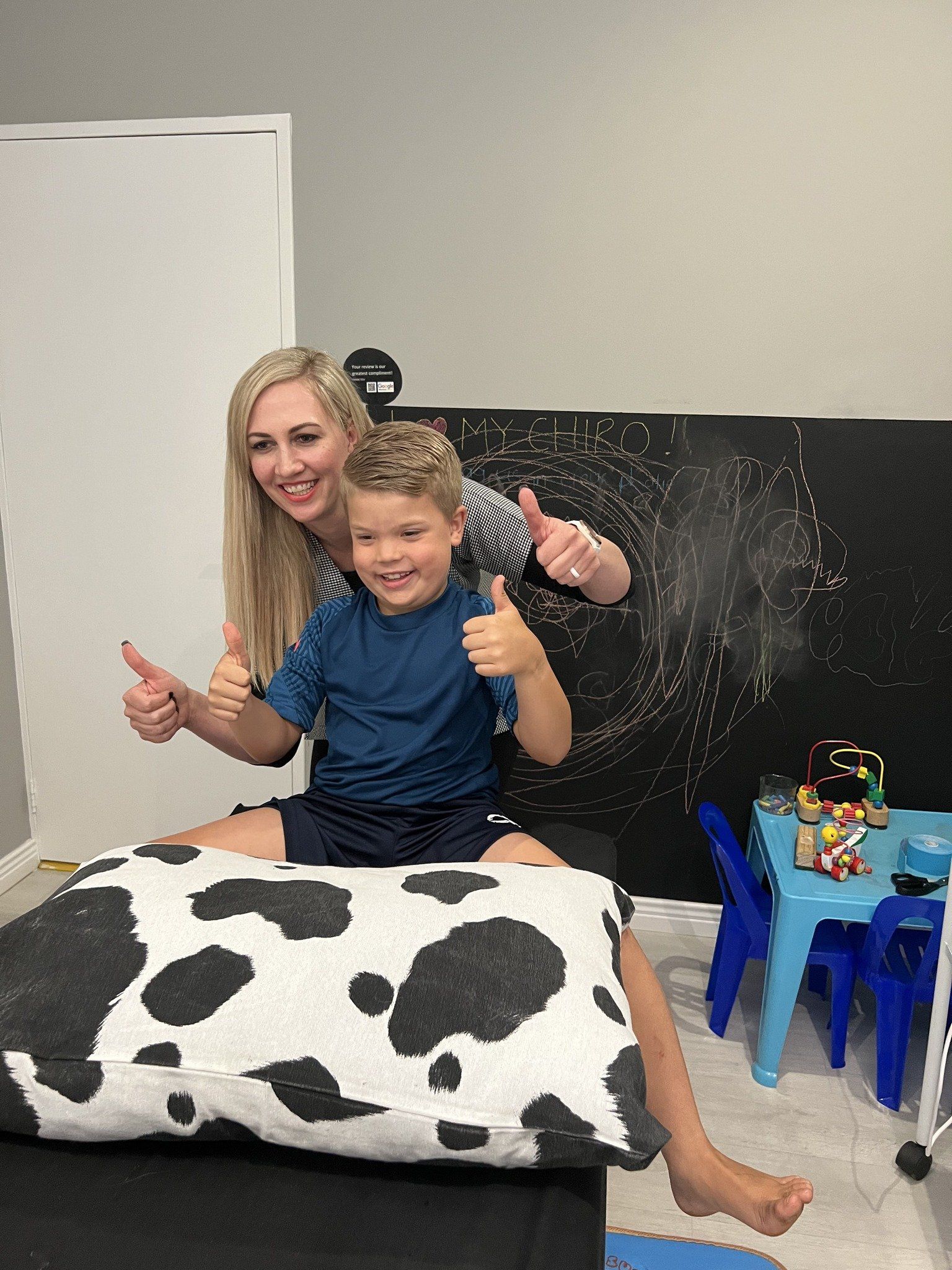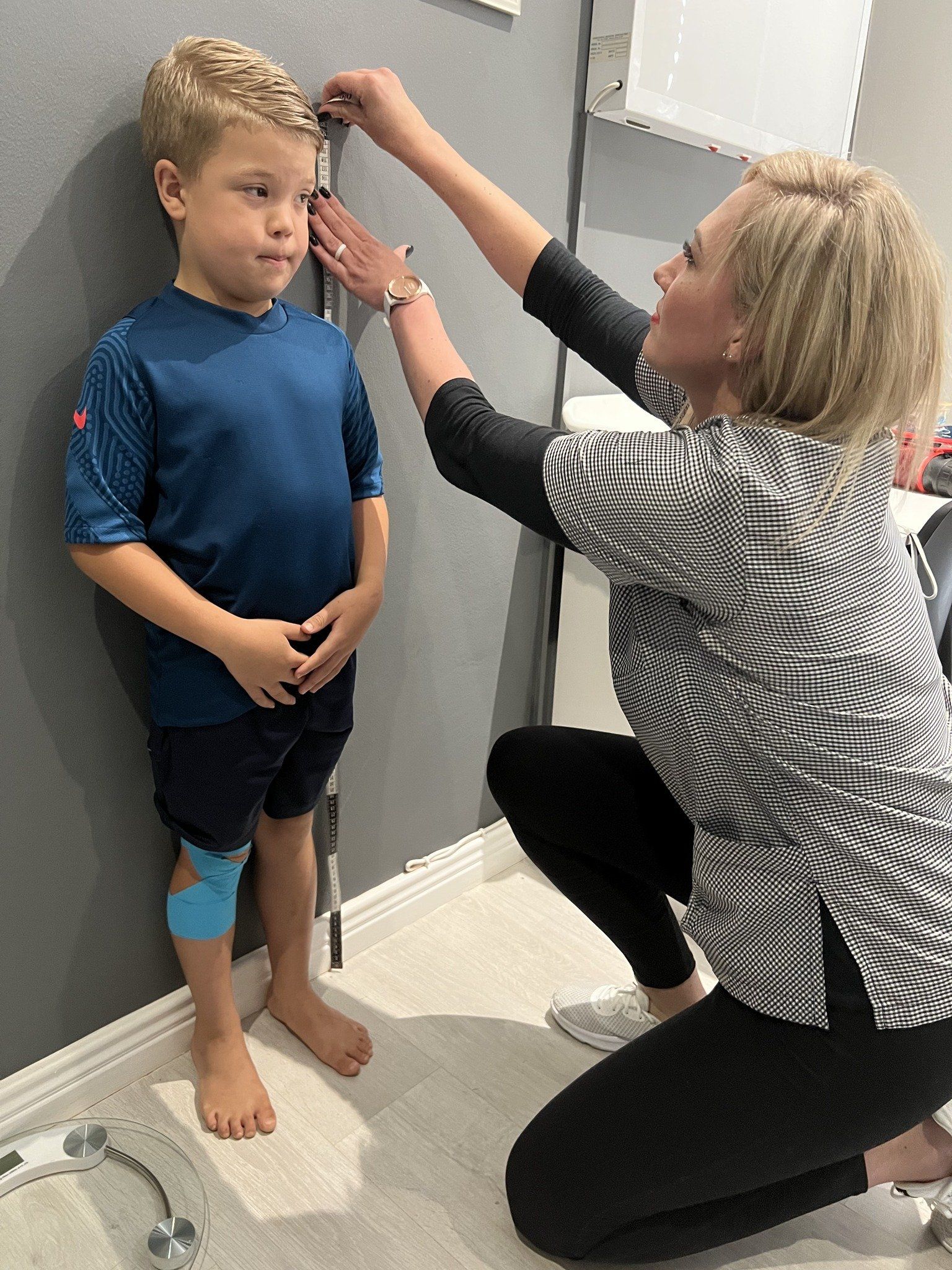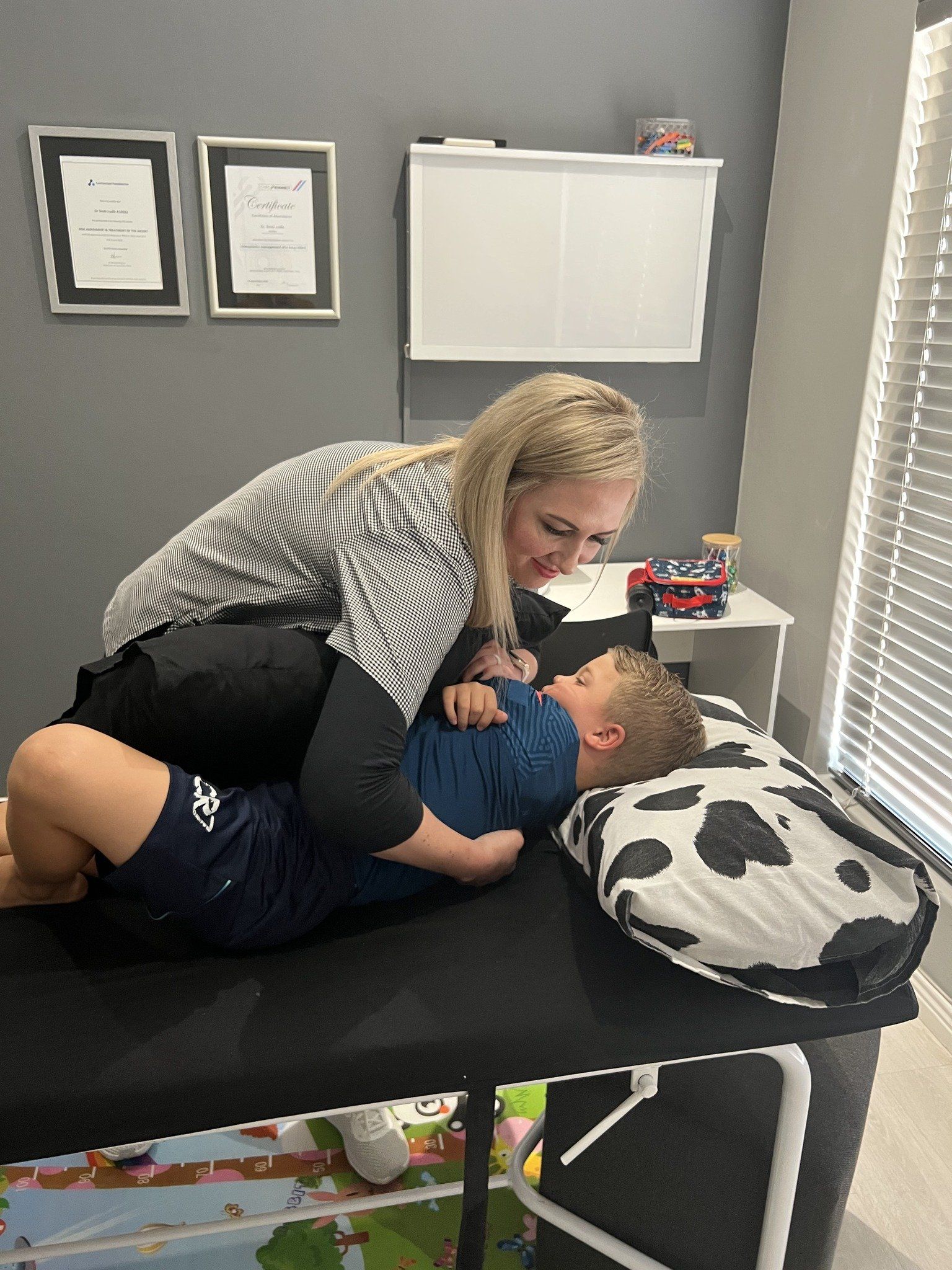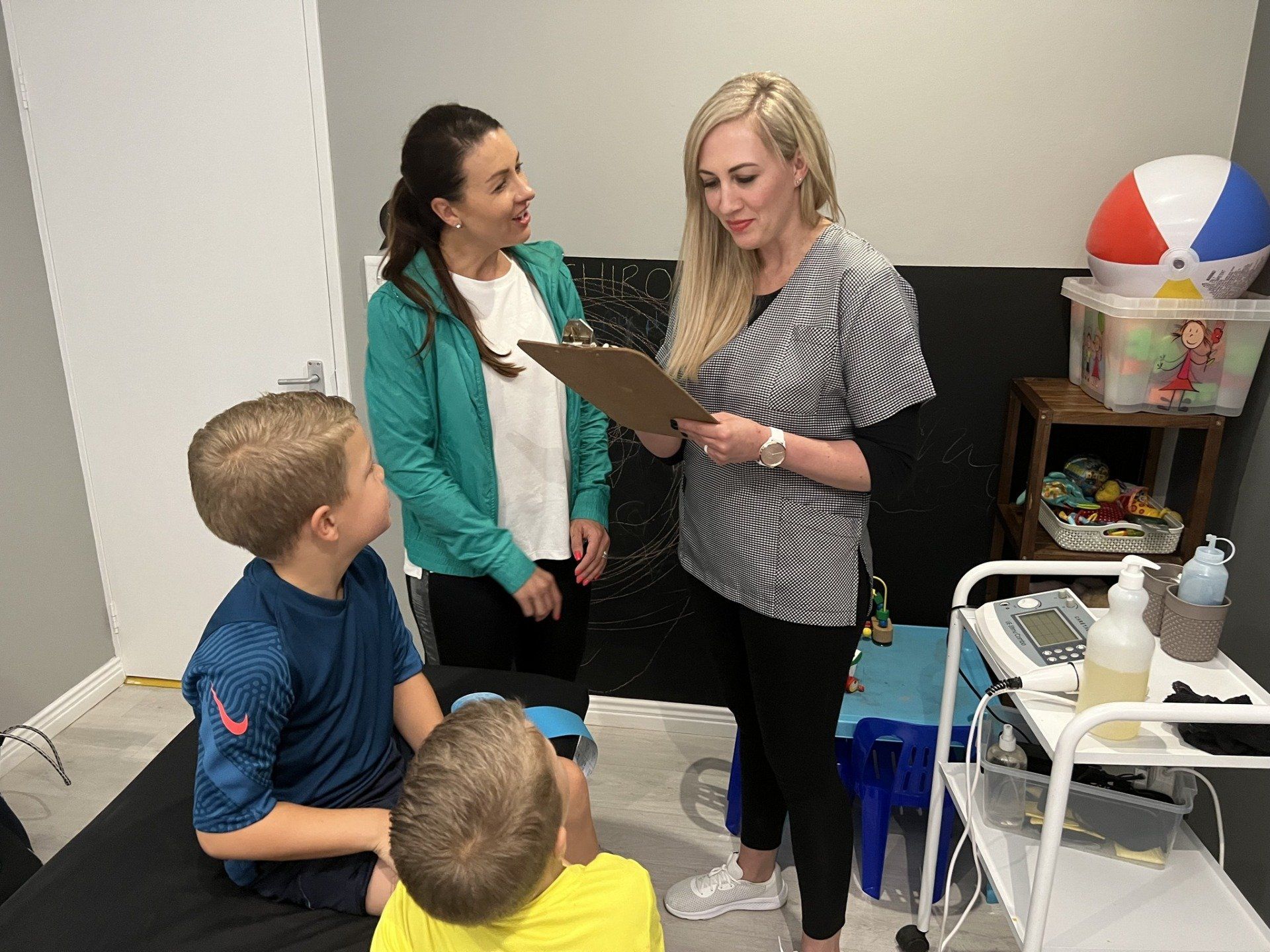ORTHOkids
because kids need care too...
Chiropractic is a form of medicine concerned with the diagnosis, treatment and prevention of mechanical disorders affecting the neuromusculoskeletal (NMSK) system. It is a hands-on, non-invasive and medicine-free practice that safely and effectively relieves pain
and discomfort and restores normal function to the NMSK system.
WHY SHOULD MY KIDS SEE A CHIROPRACTOR?
The Treatment of Neuromusculoskeletal (NMSK) Conditions
Most children undergo some form of trauma and as a result may suffer from a neuromusculoskeletal (NMSK) condition, i.e. conditions affecting the nerves, soft tissue (muscles, ligaments, tendons, discs), joints and spine of their body.
As children grow up their bodies are exposed to many environmental stresses (falls, injuries, heavy suitcases, sleeping in awkward positions, poor posture, sports injuries the use of smartphones and tablets, etc.).
NMSK conditions cause pain and dysfunction and these conditions may also affect the structure, function, growth and development of your child.
Typical signs and symptoms include:
- Muscle weakness in the arms and legs
- Loss of reflexes
- Twitching, cramps, numbness or aches and pains
- Decreased muscle size and lack of muscle tone
- Decreased sensation (tingling, numbness)
- Problems with movement, loss of balance and the ability to walk
The Treatment of Congenital Conditions
Some children may have a congenital condition (a.k.a birth defect, congenital disorder, or malformation) which is a structural or functional anomaly that occur in utero. These can be identified before birth, after birth or later in life.
These conditions also cause strain and sprain of the NMSK system which cause pain and dysfunction and can greatly affect the structure, function and development of your child.
The signs and symptoms of each condition is unique:
- Birth defects (club feet, plagiocephaly, brachycephaly, torticollis, hip dysplasia, incomplete formation of fingers, toes, arms or legs, etc.)
- Chronic conditions (bleeding disorders, childhood cancers, kidney or urinary tract disease, slow growth or short stature, cystic fibrosis, sickle cell disease, thalassemia, etc.)
- Developmental conditions (autism spectrum disorders, attention deficit/hyperactivity, developmental delay, failure to thrive, learning disability, loss of developmental skills, low muscle tone, mental illness, mental retardation, speech problems, seizures, etc.)
- Sensory deficits (extreme farsightedness, extreme nearsightedness, hearing loss, retinal or other visual problems, etc.)
The Treatment of Sleeping Difficulties
Children who experience pain and discomfort caused by NMSK conditions may find it difficult to sleep. Good quality sleep is essential to the development of young bodies and minds - it helps with the development of memory and alertness and it is essential to building a strong immune system.
Typical signs and symptoms include:
- Awakening and crying often in the night
- Sleeps for short periods of time
- Crying when you leave the room
- Refusal to go to sleep without a parent nearby
- Clinging to the parent at separation
- Loud snoring
- Daytime sleepiness
- Shifts in mood
- Trouble controlling emotion
- Weak immune system
- Poor memory
- Poor problem-solving skills
- Poor overall health
The Treatment of Growing Pains
Many children complain of vague recurrent leg pain (thigh, knee or calf) especially at night.
Typical signs and symptoms include:
- Vague and recurrent pain in the front of the thighs, calves and back of the knees
- Usually both legs
- Usually at night
- Often associated with abdominal pain and headaches
To Improve General Health and Wellness
Prevention is better than cure...chiropractic treatment improves the optimal health, wellness and development of your child!
WHEN SHOULD MY KIDS SEE A CHIROPRACTOR?
At ORTHOlifestyle we recommend regular checkup and treatment sessions for your child - 2, 3, 4 and 5 years of age. Your chiropractor will work out a treatment protocol relevant to your child's needs.
WHAT CAN MY KIDS EXPECT FROM THEIR VISIT?
A typical visit includes the following:
- Medical history taking
- Assessment upper or lower limbs and/or spine
- Soft tissue therapy
- Adjustments, mobilisations, traction of the spine and joints
- Assessment of developmental milestones (social and emotional, language and communication, cognitive, physical development as well as the exclusion of red flag symptoms) at 2, 3, 4 and 5 years of age
- Measurement of height, weight and head circumference
- Activities to do at home
- Referral for diagnostic tests if need be
- Referral to another therapist or specialist if need be



